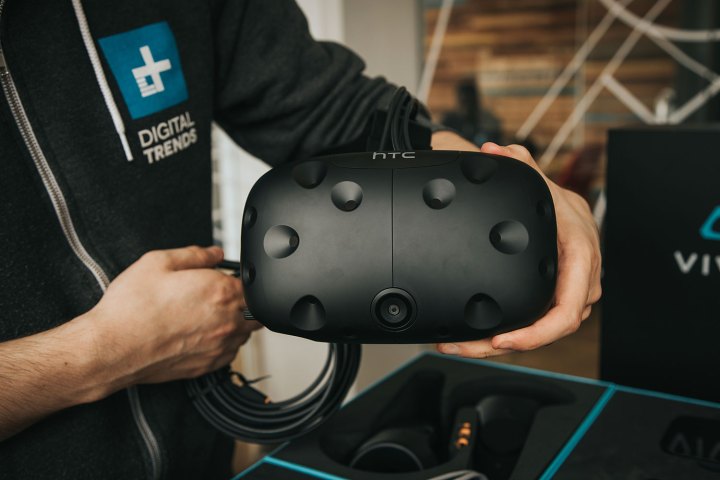
Where’s your head at?
The first is the lenses. In the Rift CV1, the lenses have different curvature to them depending on which part of the lens the wearer is looking through. That means changing and refining focus is as easy as moving the headset up and down on your face. With the Vive, an eye relief mechanism is built in, allowing you to push the unit closer or further away to focus. That means the lenses are a more standard Fresnel lens, with a flat surface on one side.
The screens, which boast the same resolution, are actually slightly different in size. Now that iFixit has broken down each unit, we can more accurately compare the two panels. “Each [Vive] display measures ~91.8 mm diagonally, which translates to ~447 ppi. For comparison, the Rift CV1 has ~456 ppi due to a slightly smaller display (90 mm) that still packs the same resolution as the Vive.” That PPI difference doesn’t translate to real, noticeable differences between the screens, though, particularly with the lenses acting as a separation between the screens and your eyes.
We also knew the IR tracking systems in the Vive and Rift are different, but this look inside the device shows exactly how the Vive’s tracking operates. The lighthouse trackers actually blast the area with rows of light, which the 32 photodiodes inside the headset can see. Based on the timing of the motors in the lighthouse, the headset is able to locate itself within the space. That’s the opposite of the Rift’s tracking system, where the Constellation tracker searches for the IR emitters on the headset.
Remotes and Lighthouse
The first thing the iFixit team noticed as it set about breaking down the Vive’s motion controllers were the striking similarities to the Steam Controller. Valve clearly had a lot of influence on HTC’s manufacturing process, as it turns out the two controllers actually share quite a few chips in common.
Taking the lid off the Lighthouse trackers required a bit of heat and prying, but once open, the internals were easily accessible. Two motors spin on each side, emitting the laser grid at alternating points in their rotation. It’s one of the more delicate parts of the system, as adjusting the motors could lead to tracking failure if you don’t know what you’re doing.
Making the grade
With the dust properly settled, iFixit gives the HTC an 8/10 for repair-ability. That’s largely thanks to HTC’s reliance on Philips and Torx screws instead of tape and glue. It was marked down for the fact that a few of the components, namely the lenses and Lighthouse covers, are glued down, and for the sheer number and complexity of the individual pieces.
Compare that to the Rift CV1’s 7/10 iFixit score, largely due to the many ribbon cable booby traps, and the fact that replacing the head strap involves cutting the IR-transparent fabric on the outside of the headset. That’s just the headset, though. The Rift’s Constellation tracker received its own 1/10 score because iFixit had to use a rotary tool to cut open the housing, despite the fact Palmer Luckey insists it’s possible to disassemble the Constellation tracker without doing so.
The bottom line is that both headsets, despite cutting edge technology and a price tag to match, are surprisingly easy to fix should something go awry. That doesn’t mean we’d recommend opening either yourself, but the option is there — if you’re feeling bold.
Editors' Recommendations
- Lenovo partners with iFixit to drastically improve laptop repairability
- iFixit teardown shows Studio Display is full of surprises
- Microsoft and iFixit team up on official repair kits for Surface devices
- The Mac Pro is the most repairable Apple device ever, according to iFixit


